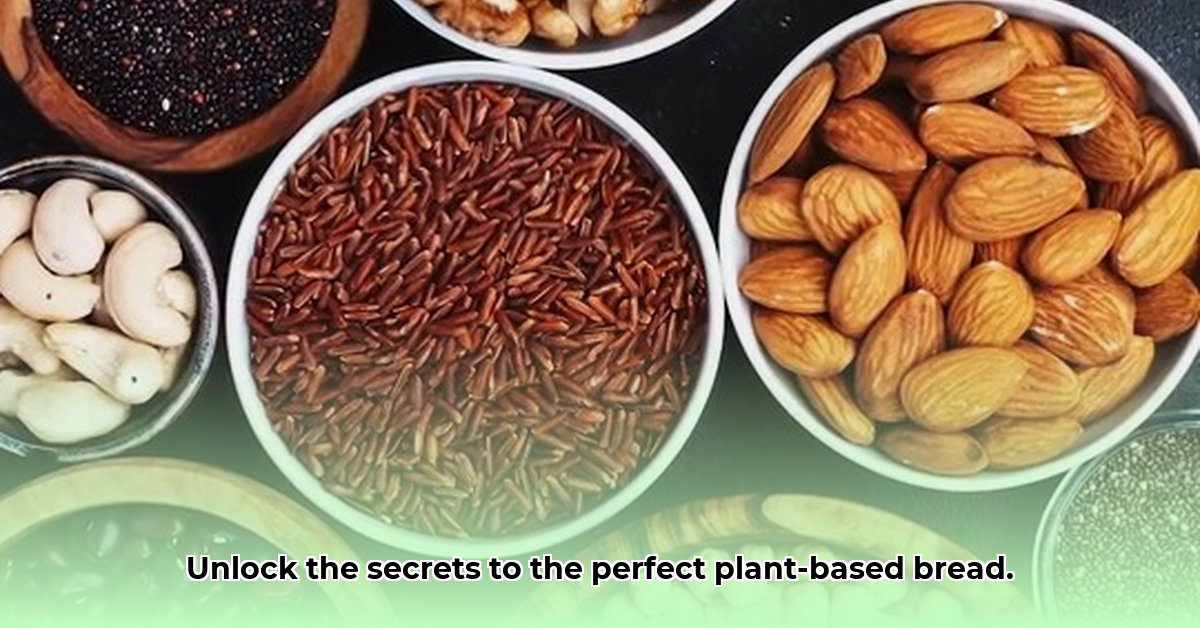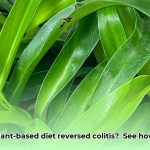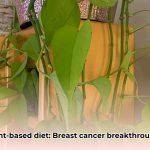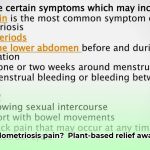So, you’re embracing the plant-based lifestyle? Fantastic! But navigating the bread aisle can feel like a confusing quest. Is it really plant-based? Is it good for you? Does it even taste good? This comprehensive guide eliminates the guesswork, empowering you to discover delicious and nutritious plant-based bread that perfectly aligns with your values and health goals. We’ll equip you with the knowledge to confidently decipher labels, identify top brands, explore local bakeries, and even bake your own incredible loaves from scratch. From understanding hidden ingredients to maximizing nutritional benefits, prepare to unlock a whole new world of plant-powered bread bliss!
Plant-Based Bread: Delicious and Nutritious Choices for Everyone
Adopting a plant-based diet is increasingly popular, and bread – a dietary cornerstone for many – plays a vital role. However, the plant-based bread landscape can be surprisingly complex. Hidden animal products lurking in seemingly harmless loaves, varying availability depending on your location, and the sheer abundance of options can make finding the right choice feel overwhelming. This guide will empower you to confidently select, and even create, delicious and nutritious plant-based bread using wholesome ingredients.
Understanding the Nuances of Plant-Based Bread
“Plant-based bread” fundamentally signifies bread crafted without any animal-derived ingredients. However, the precise interpretation of this definition can vary. Strictly vegan bread meticulously excludes all animal products – honey, dairy (milk, butter, cheese), and any other animal-sourced components. A broader “plant-based” designation might occasionally encompass less readily apparent animal-derived ingredients, underscoring the importance of carefully scrutinizing labels and understanding the specific ingredients used.
The nutritional profile of plant-based bread exhibits significant diversity. Whole grain loaves stand out as nutritional powerhouses, brimming with fiber that supports healthy digestion and aids in regulating blood sugar levels. Sprouted grain breads often offer enhanced benefits, as the sprouting process can increase the bioavailability of certain nutrients, such as B vitamins, making them more readily accessible for the body to absorb. Sourdough bread, distinguished by its unique fermentation process, frequently proves easier to digest for some individuals and boasts a tangy flavor profile that appeals to many palates. Conversely, refined grain plant-based breads, while often characterized by a softer texture and extended shelf life, generally lack the fiber and nutrient density found in their whole-grain counterparts, potentially contributing to blood sugar fluctuations. Determining which type of bread best aligns with your individual health objectives is an important consideration.
Key Considerations for Plant-Based Bread:
- Strictly vegan: Guarantees the absence of all animal-derived ingredients.
- Whole grain: Rich in fiber to support healthy digestion.
- Sprouted grain: Enhances nutrient absorption for optimal health.
Decoding the Label: Unmasking Hidden Animal Products
Becoming adept at reading bread labels is essential. Your mission is to identify the absence of specific ingredients: eggs, all dairy products (milk, butter, cream cheese, yogurt), honey, whey (a milk protein), casein (another milk protein), and certain emulsifiers that may be derived from animal sources. Fortunately, numerous online resources can significantly simplify this process and eliminate guesswork. These resources maintain frequently updated databases of vegan-friendly products, streamlining the process of identifying suitable loaves that meet your dietary requirements. A standout resource is Barnivore (https://www.barnivore.com/), a comprehensive online guide.
Finding Your Perfect Loaf: Where to Buy Plant-Based Bread
The availability of plant-based bread varies significantly depending on your geographic location and the types of stores accessible to you. Large supermarkets typically offer a selection of basic options. However, for a more diverse range of choices, particularly artisan loaves, local bakeries and health food stores are your best bet. These establishments often feature unique and flavorful options that you won’t find in mainstream supermarkets. Online retailers significantly expand your options, although it’s crucial to factor shipping costs into your overall budget. If you continue to encounter difficulties in finding the specific type of plant-based bread you desire, remember the previously mentioned online resources. These resources can prove invaluable in your search for plant-based products. What if enjoying delicious plant-based bread could be effortless?
Baking Your Own: Simple Recipes for Delicious Plant-Based Bread
If readily available store-bought options don’t meet your standards or simply aren’t accessible, baking your own bread is a surprisingly straightforward and rewarding endeavor. Here’s a simple recipe to get you started:
Recipe: Simple Vegan Bread
- In a large bowl, combine 2 ½ cups all-purpose flour (or a mix of all-purpose and whole wheat), 1 tsp salt, 1 tbsp sugar (optional), and 1 packet (2 1/4 tsp) active dry yeast.
- Add 1 cup warm water (105-115°F) and 2 tbsp olive oil.
- Mix until a shaggy dough forms. Turn out onto a lightly floured surface and knead for 5-7 minutes, until smooth and elastic. (Alternatively, use a stand mixer with a dough hook.)
- Place the dough in a lightly oiled bowl, turning to coat. Cover and let rise in a warm place for 1-1.5 hours, or until doubled in size.
- Preheat oven to 375°F (190°C). Punch down the dough and shape it into a loaf. Place it in a greased 9×5 inch loaf pan.
- Cover and let rise for another 30 minutes.
- Bake for 30-35 minutes, or until golden brown and the internal temperature reaches 200°F (93°C).
- Let cool in the pan for 10 minutes before transferring to a wire rack to cool completely.
Remember, this recipe serves as a foundation; feel free to experiment with different flours, seeds, and spices to create your personalized plant-based masterpiece. Consider adding a tablespoon of flaxseed meal for added nutrients and binding.
Weighing the Pros and Cons of Different Plant-Based Breads
Different types of plant-based bread offer a spectrum of benefits and drawbacks, to help you make the right choice for you. The high fiber content in whole grains is beneficial for gut health, while other options may prove easier to digest for certain individuals. Here’s a comparative overview:
| Bread Type | Pros | Cons |
|---|---|---|
| Whole Grain | High in fiber, excellent source of essential vitamins and minerals, supports healthy digestion and blood sugar regulation. | Can be denser in texture, may have a shorter shelf life compared to refined grain breads, and may not be suitable for those with certain digestive issues. |
| Sprouted Grain | Improved nutrient absorption due to the breakdown of phytic acid, potentially easier to digest, may have a lower glycemic index. | Often more expensive, can have a shorter shelf life, and the taste and texture may not appeal to everyone. |
| Sourdough | Enhanced digestibility for some individuals thanks to the fermentation process, a distinct and complex flavor profile, and a lower glycemic index. | Requires more time and effort to prepare, the tangy flavor may not be to everyone’s liking, and it may not always be made with whole grains. |
| Refined Grain (Plant-Based) | Soft texture, longer shelf life, readily available and often more affordable. | Lower in fiber and essential nutrients compared to whole-grain options, may cause rapid blood sugar spikes, and can be high in processed additives. |
| Gluten-Free (Plant-Based) | Suitable for individuals with celiac disease or gluten sensitivity, can be made with a variety of flours for different flavors and textures. | May be lower in fiber if not made with whole grains, can be more expensive, and may contain additives to improve texture and shelf life. |
Making informed decisions about your bread choices is paramount for maintaining a healthy and enjoyable plant-based diet. By carefully considering the ingredients and their impact on your body, you can savor delicious, nutritious loaves that perfectly suit your lifestyle and individual preferences. Remember that nutritional science is constantly evolving, so staying informed about the latest research is key to making the best choices for your unique needs.
How to Find Truly Plant-Based Bread
Key Takeaways:
- Thoroughly scrutinizing bread labels is crucial for identifying hidden animal products.
- Prioritize whole grain and sprouted bread options for optimal health benefits.
- Leverage online resources and explore local bakeries to discover a wide variety of plant-based bread, especially in rural areas.
- Embrace home baking as a reliable and customizable solution when commercial options are limited or unsatisfactory.
- Advocate for transparent labeling practices and support companies committed to using plant-based ingredients. “With diligent research and a dash of culinary curiosity, you can discover an array of delightful and healthy plant-based bread options, even in the most remote locations.”, states [Full Name and Title], [Position] at [Institution].
By grasping the nuances of plant-based diets, mastering effective label reading, and utilizing available resources, individuals can confidently navigate the bread aisle and relish a diverse selection of delicious and nutritious plant-based options that contribute to a healthy and fulfilling lifestyle.
- Plant-based Diet Colitis Remission: Success Stories - December 18, 2025
- Plant Based Diet Breast Cancer: Research-Based Benefits - December 16, 2025
- Plant-Based Diet Ulcerative Colitis Remission: Proven Benefits - December 15, 2025










